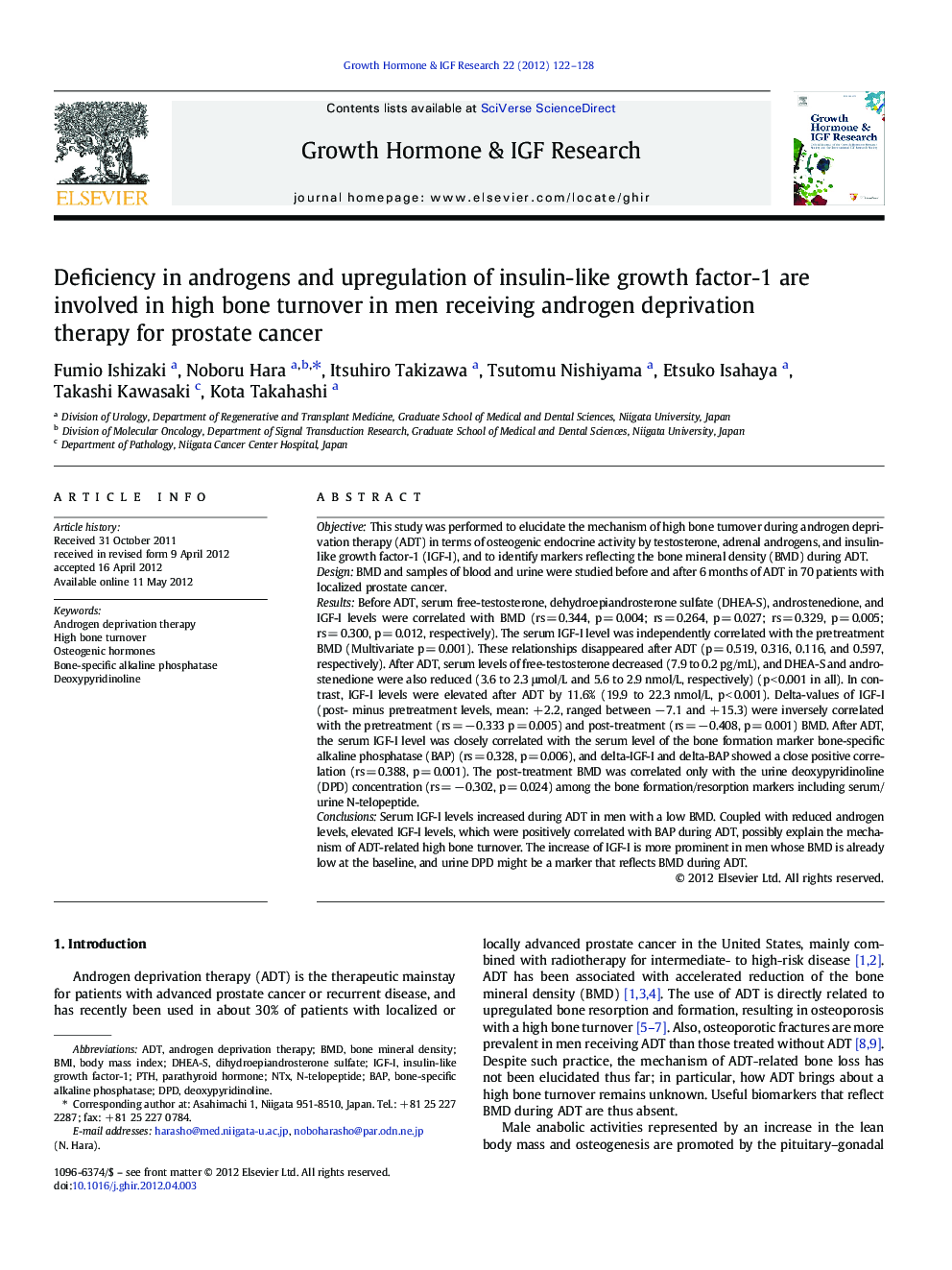| کد مقاله | کد نشریه | سال انتشار | مقاله انگلیسی | نسخه تمام متن |
|---|---|---|---|---|
| 2802943 | 1568958 | 2012 | 7 صفحه PDF | دانلود رایگان |

ObjectiveThis study was performed to elucidate the mechanism of high bone turnover during androgen deprivation therapy (ADT) in terms of osteogenic endocrine activity by testosterone, adrenal androgens, and insulin-like growth factor-1 (IGF-I), and to identify markers reflecting the bone mineral density (BMD) during ADT.DesignBMD and samples of blood and urine were studied before and after 6 months of ADT in 70 patients with localized prostate cancer.ResultsBefore ADT, serum free-testosterone, dehydroepiandrosterone sulfate (DHEA-S), androstenedione, and IGF-I levels were correlated with BMD (rs = 0.344, p = 0.004; rs = 0.264, p = 0.027; rs = 0.329, p = 0.005; rs = 0.300, p = 0.012, respectively). The serum IGF-I level was independently correlated with the pretreatment BMD (Multivariate p = 0.001). These relationships disappeared after ADT (p = 0.519, 0.316, 0.116, and 0.597, respectively). After ADT, serum levels of free-testosterone decreased (7.9 to 0.2 pg/mL), and DHEA-S and androstenedione were also reduced (3.6 to 2.3 μmol/L and 5.6 to 2.9 nmol/L, respectively) (p < 0.001 in all). In contrast, IGF-I levels were elevated after ADT by 11.6% (19.9 to 22.3 nmol/L, p < 0.001). Delta-values of IGF-I (post- minus pretreatment levels, mean: + 2.2, ranged between − 7.1 and + 15.3) were inversely correlated with the pretreatment (rs = − 0.333 p = 0.005) and post-treatment (rs = − 0.408, p = 0.001) BMD. After ADT, the serum IGF-I level was closely correlated with the serum level of the bone formation marker bone-specific alkaline phosphatase (BAP) (rs = 0.328, p = 0.006), and delta-IGF-I and delta-BAP showed a close positive correlation (rs = 0.388, p = 0.001). The post-treatment BMD was correlated only with the urine deoxypyridinoline (DPD) concentration (rs = − 0.302, p = 0.024) among the bone formation/resorption markers including serum/urine N-telopeptide.ConclusionsSerum IGF-I levels increased during ADT in men with a low BMD. Coupled with reduced androgen levels, elevated IGF-I levels, which were positively correlated with BAP during ADT, possibly explain the mechanism of ADT-related high bone turnover. The increase of IGF-I is more prominent in men whose BMD is already low at the baseline, and urine DPD might be a marker that reflects BMD during ADT.
Journal: Growth Hormone & IGF Research - Volume 22, Issues 3–4, June–August 2012, Pages 122–128